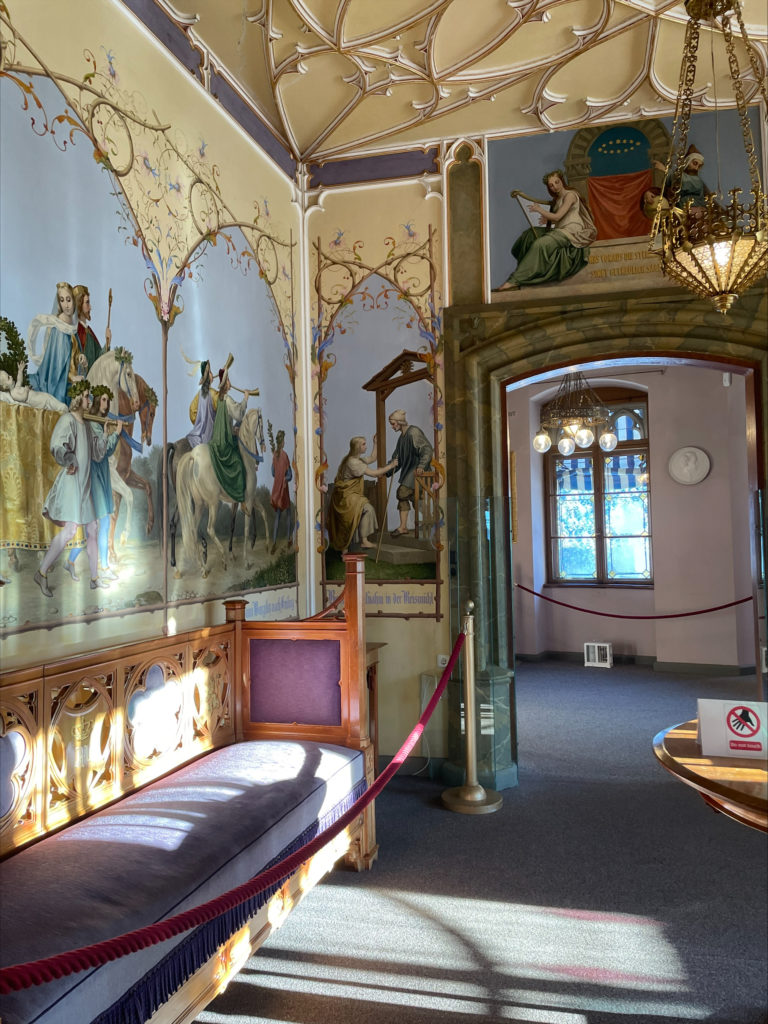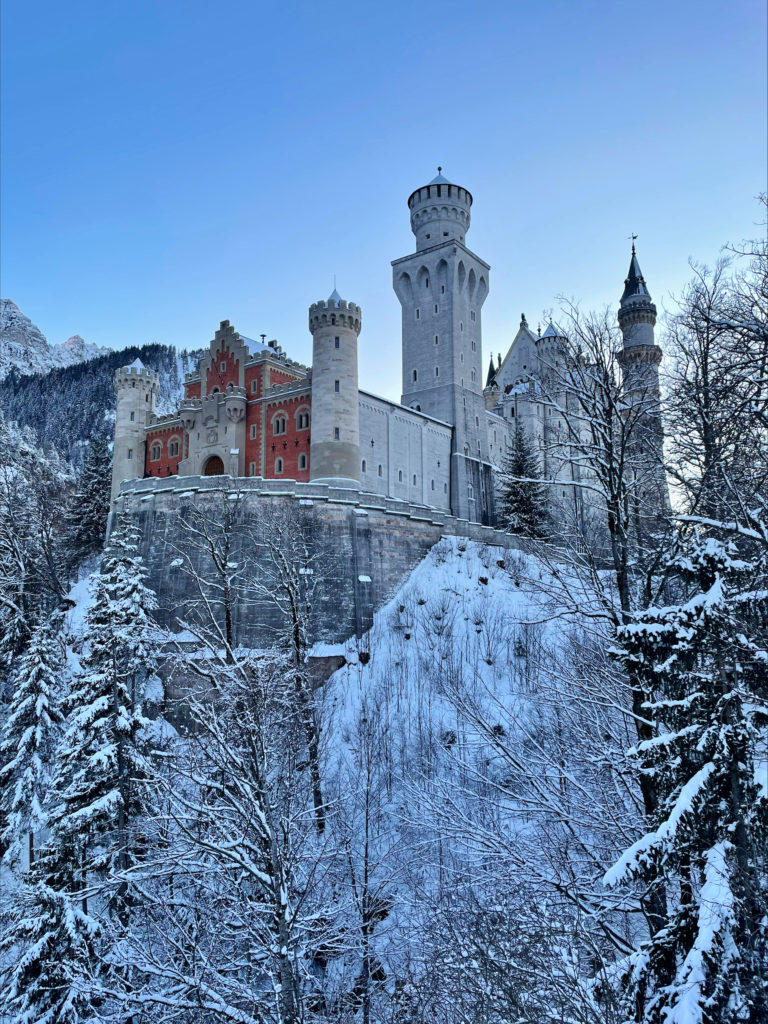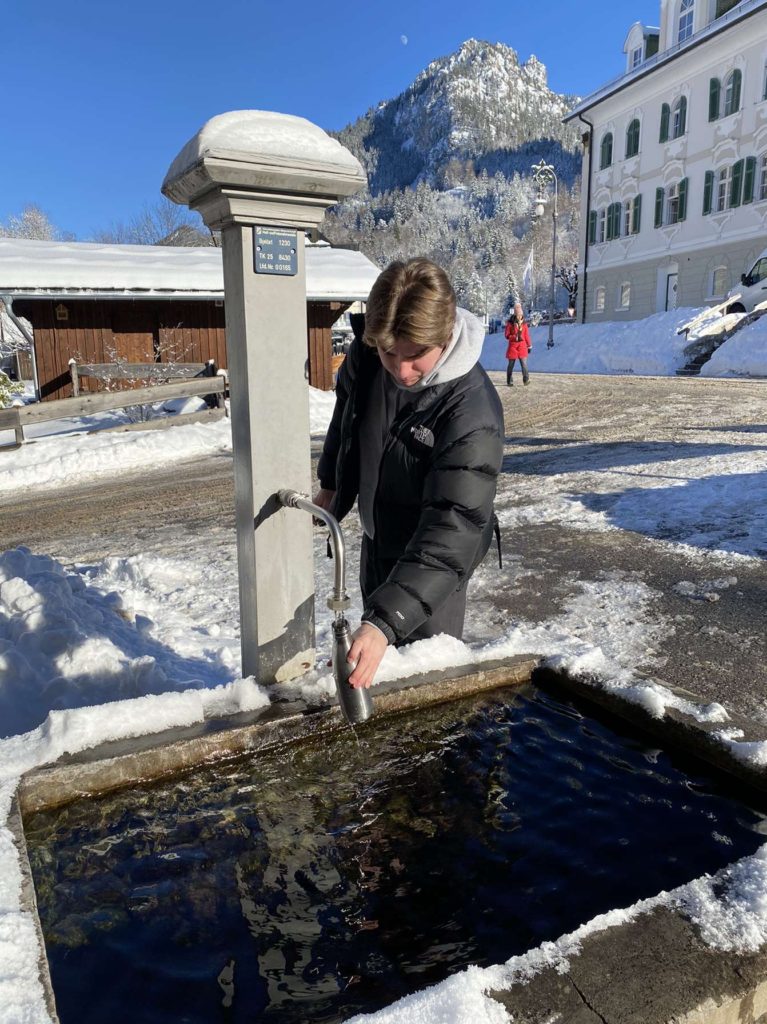Author’s note:
My name is Tom Prottey and I am a third year BA Modern Languages student studying French and German. I am currently on my year abroad and completing an internship within the sales department at Framatome GmbH (an EDF subsidiary specializing in nuclear products and services). This weekend I travelled to Schwangau (Swan area), the area home to the famous Schloss Neuschwanstein and the not-so-famous Schloss Hohenschwangau.
On Saturday 15th January I travelled with a colleague to visit the Neuschwanstein and Hohenschwangau Schlösse (castles) which are located in Hohenschwangau, southern Germany. We started our journey from Erlangen at 8am, passing through Nuremburg, Augsburg and many rural Bavarian villages before finally arriving 5 hours later in Füssen.

First, we took a short bus to visit the Alpsee (a natural lake in the northern German Alps) as it is renowned for its breathtaking views and crystal-clear water. You are able to row boats within the lake but, as it was -8 degrees, we opted for a walk around the lake.

We had aimed to buy tickets to enter and tour Schloss Neuschwanstein, however they had sold out. Instead we managed to purchase tickets for a tour of Schloss Hohenschwangau which was restored and built by King Maximilian II of Bavaria as an official summer and hunting residence. Inside the castle, there are more than 90 highly-detailed wall paintings which represent the history of Schwangau, as well as many medieval German romances such as “Parzival and the story of Lohengrin” and the “Knight of the Swan”. If these names sound familiar to you, this is because Richard Wagner based some of his famous operas on these romances. King Maximilian II’s son, King Ludwig II of Bavaria, inherited this castle and also chose to build his own: Schloss Neuschwanstein.

Located directly opposite of Hohenschwangau, Neuschwanstein towers over the surrounding area. The castle was designed not only as a rural retreat for Ludwig, but also in honour of Richard Wagner. After a 26 minute walk up the Alps, we reached the castle but, as we did not have tickets, we were only able to see the outside. This was not the end of the world, however, as the castle is actually unfinished. King Ludwig II financed the castle personally and subsequently ran out of money shortly before dying in 1886. Due to this, the castle is reportedly not the most interesting within. If the sight of Schloss Neuschwanstein looks familiar to you, it is probably because it is seen in “Chitty Chitty Bang Bang” and is said to be the inspiration for Disney’s “Cinderella” castle.

Tom enjoying some freshly flowing water from the Alpsee
After roughly 5 hours of exploration, we caught the train back to Munich to eat dinner in the famous Augustiner Bierkeller and relax before travelling back to Erlangen on Sunday 16th January.

Join the discussion
0 people are already talking about this, why not let us know what you think?